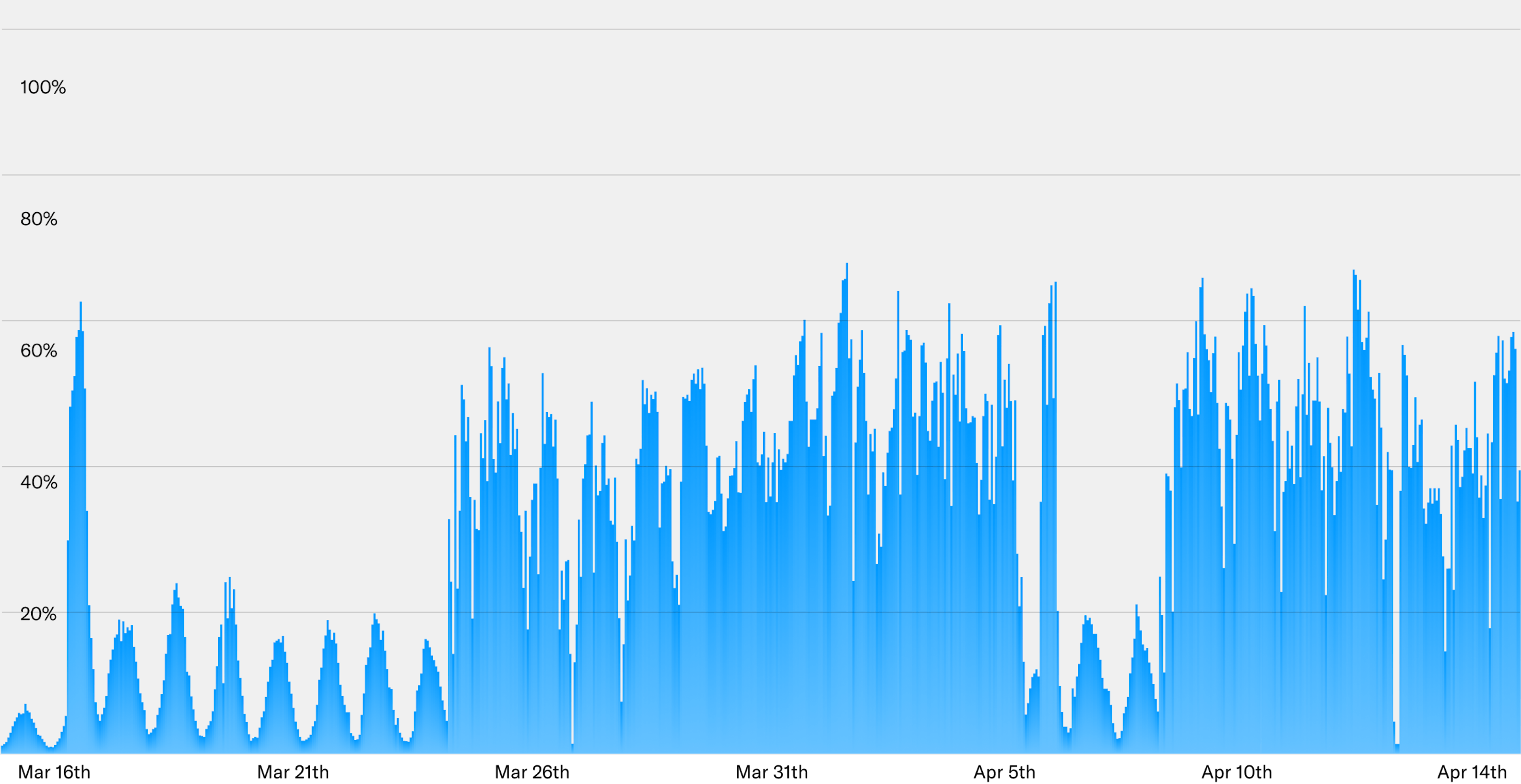
A brief history of scaling blockchains at Worldcoin
The Worldcoin protocol aims to become the largest financial and identity network. But more than that, it should do that by being the most inclusive project and allow anyone in the world to join. On a technological side, this means building systems that are able to scale to billions of users. Specifically for blockchains it was clear that this would bring networks to their limits, and far beyond.
While still early for Ethereum Rollups as a whole, the Worldcoin team came across the Hubble Project around the end of 2020 and started implementing a more performant sequencer. Hubble was somewhat original in its hybrid zk/optimistic design as it employed BLS signature aggregation and custom compressed transaction formats combined with fraud proofs. World App, an important early application developed for the Worldcoin protocol by Tools for Humanity, used Hubble in its first alpha phase and scaled using it to around 700,000 users.
Even though very efficient (less than 12 bytes of L1 calldata for a token transfer), Hubble’s design proved to be limiting in terms of user and developer experience, as it only allowed for simple transfers and adding new transaction types would require a protocol upgrade including an additional custom fraud proof that needs to be implemented. It quickly became clear that users’ needs extended beyond just holding or sending WLD. The Worldcoin core contributors, decided to migrate to Polygon PoS network, which was at the time the only performant and cheap network in the Ethereum ecosystem. At around the same time, World App also started offering users swaps and access to other tokens as well as meta-transactions that allow for gasless transactions (because blockchain transactions should roughly be free for users in the long run!) through deploying Safe accounts for every user.
Shortly before Worldcoin’s release from beta in July 2023, Worldcoin decided that Ethereum Rollups have matured enough and to migrate to OP Mainnet, at that time including around 2 Million Worldcoin users. The launch of the Worldcoin project in July 2023, however, quickly showed many areas in the overall L2 infrastructure stack that could benefit from improvement (including OP mainnet itself, relayer infrastructure, RPC providers, World App infrastructure). While Worldcoin was the first major application launching on an Ethereum L2 (and remains the largest to this day), it became clear that the L2 ecosystem was still in an early stage for major applications.
The migration to a L2 also surfaced a lot of inefficient onchain activity. While execution gas fees remained low, suddenly calldata gained more importance, demanding a series of initially counterintuitive optimizations. For instance, instead of submitting transactions in their raw form individually, we employed similar techniques as some early ideas in Hubble and used compression contracts to reduce calldata consumption. This involved all sorts of little hacks like hardcoding lookup tables for contract addresses, but ultimately made it feasible for Worldcoin to operate on an Ethereum L2; however, the recent increase in overall activity across L2s caused the L1 gas prices to increase by more than 20x over sustained periods of time. Luckily, Ethereum’s “Dencun'' upgrade with EIP-4844 – for which we helped build the infrastructure for the largest trusted setup ceremony in history – shipped in February 2024, making gas prices less of an issue for Worldcoin users. Once again, the rules fundamentally changed and L2 execution gas has become the dominant cost factor, and, for now, the key bottleneck hindering broader adoption of L2s. Of course, EIP-4844 also hasn’t solved long-term scalability of Ethereum and we need long-term improvements to Ethereum mainnet, such as Danksharding.

Percentage of all gas on OP mainnet used by Worldcoin in the last 30 days.
A home for scaling Worldcoin and L2s: World Chain
Ultimately, both L1 and L2 need to undergo drastic improvements in the coming years to be able to deliver on the vision of bringing the whole world onchain. At Worldcoin Foundation, we firmly believe L2s should be the place for experimentation and innovation, and that we can significantly contribute to this mission. Committed to making a meaningful contribution, we decided to join the Superchain effort and launch World Chain, a dedicated L2.
Bringing the entire world onchain presents a monumental task, exceeding the capacity of any single entity. We recognize that collaboration is key. That’s why we are excited to be part of the Superchain alongside Optimism, Coinbase, and the wider Ethereum ecosystem.
World Chain is an OP Stack chain that will be heavily targeted for scale. Our immediate goal is to increase the L2 block gas limit by a significant factor. As this comes with risks and cannot be done blindly, we are conducting it in a safe way, supported by researching the worst case performance scenarios. If you’re interested in working on this issue further, please consider applying in our grants program!
We also think that L2s allow for a new trade-off space and we want to actively explore this with Reth as a “L2 native” execution client. While starting out on op-geth, our next immediate goal therefore is to switch to op-reth in production. From there on, we want to iterate quickly on performance improvements in a high-scale production environment.
Besides improvements on the execution layer, we’re also exploring alternative Data Availability (DA) layers including Plasma-like DA. While EIP-4844 alleviated the current throughput bottleneck, the issue is likely to resurface soon. Worldcoin’s ongoing scaling might require World Chain to switch to alternative DA layers at some point to allow for further growth without putting the burden of high fees on users.
All in all, there is still a lot of work to be done to actually bring the whole world onchain, but we are fortunate enough to work on this together with the whole community.
Disclaimer
The above content speaks only as of the date indicated. Further, it is subject to risks, uncertainties and assumptions, and so may be incorrect and may change without notice. A full disclaimer can be found in our Terms of Use and Important User Information can be found on our Risks page.